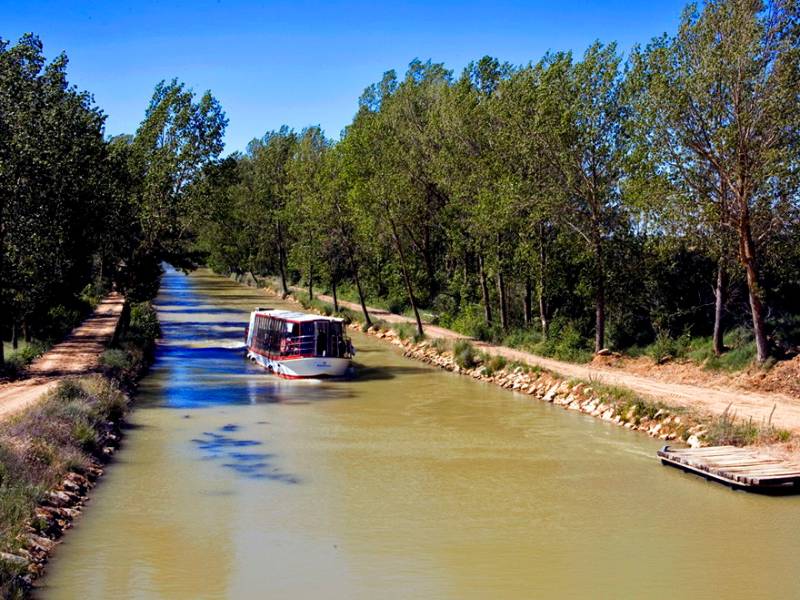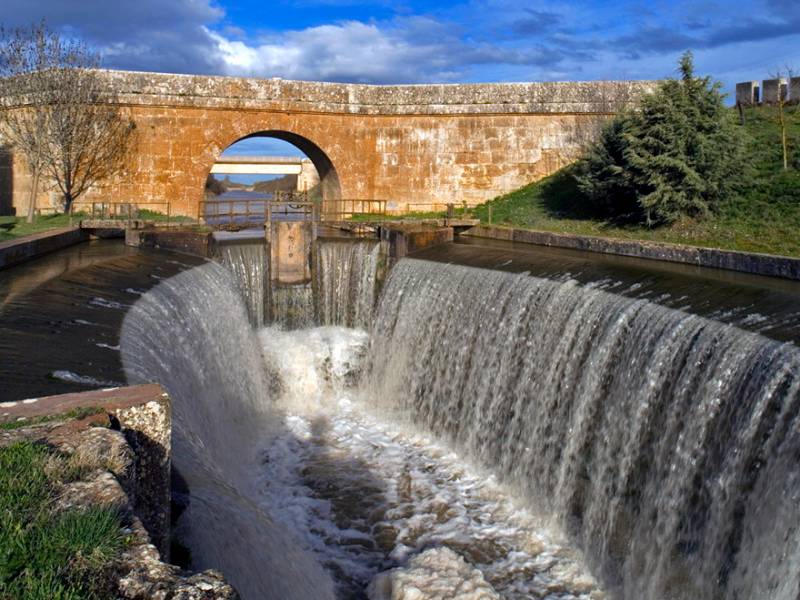Castile Canal
- Position
- Burgos province
- Palencia province
- Valladolid province
- Type of route
- Large tour
- Web
- To know more
This impressive piece of hydraulic engineering was built in the 18th and 19th century to get rid of surplus grain.
Initially designed as a means of transporting goods, the canal eventually closed to traffic in the mid 20th century. Today an Asset of Cultural Interest, since 1959 its principal function has been that of irrigation, although it is also one of Castilla y León’s most popular tourist routes, admired for its stunning natural landscapes, and the wealth of artistic and historic heritage to be found in the cities that stand on its banks.
150 years later, this artificial river which flows 205km along the Meseta between the province of Palencia and Valladolid, has become an interesting cultural trail, offering the architectural diversity of its three branch roads which take tourists along the Ramal del Norte, the Ramal del Sur and the Ramal de Campos. The route combines the natural environment found along the riverbanks with the history and tradition of the towns.


